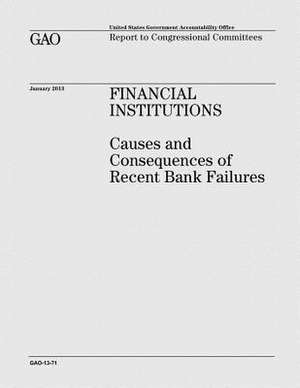Financial Institutions
Autor U. S. Government Accountability Officeen Limba Engleză Paperback
Preț: 159.79 lei
Nou
Puncte Express: 240
Preț estimativ în valută:
30.57€ • 31.93$ • 25.25£
30.57€ • 31.93$ • 25.25£
Carte disponibilă
Livrare economică 25 martie-08 aprilie
Preluare comenzi: 021 569.72.76
Specificații
ISBN-13: 9781481923996
ISBN-10: 1481923994
Pagini: 160
Dimensiuni: 216 x 280 x 9 mm
Greutate: 0.39 kg
Editura: CREATESPACE
ISBN-10: 1481923994
Pagini: 160
Dimensiuni: 216 x 280 x 9 mm
Greutate: 0.39 kg
Editura: CREATESPACE
